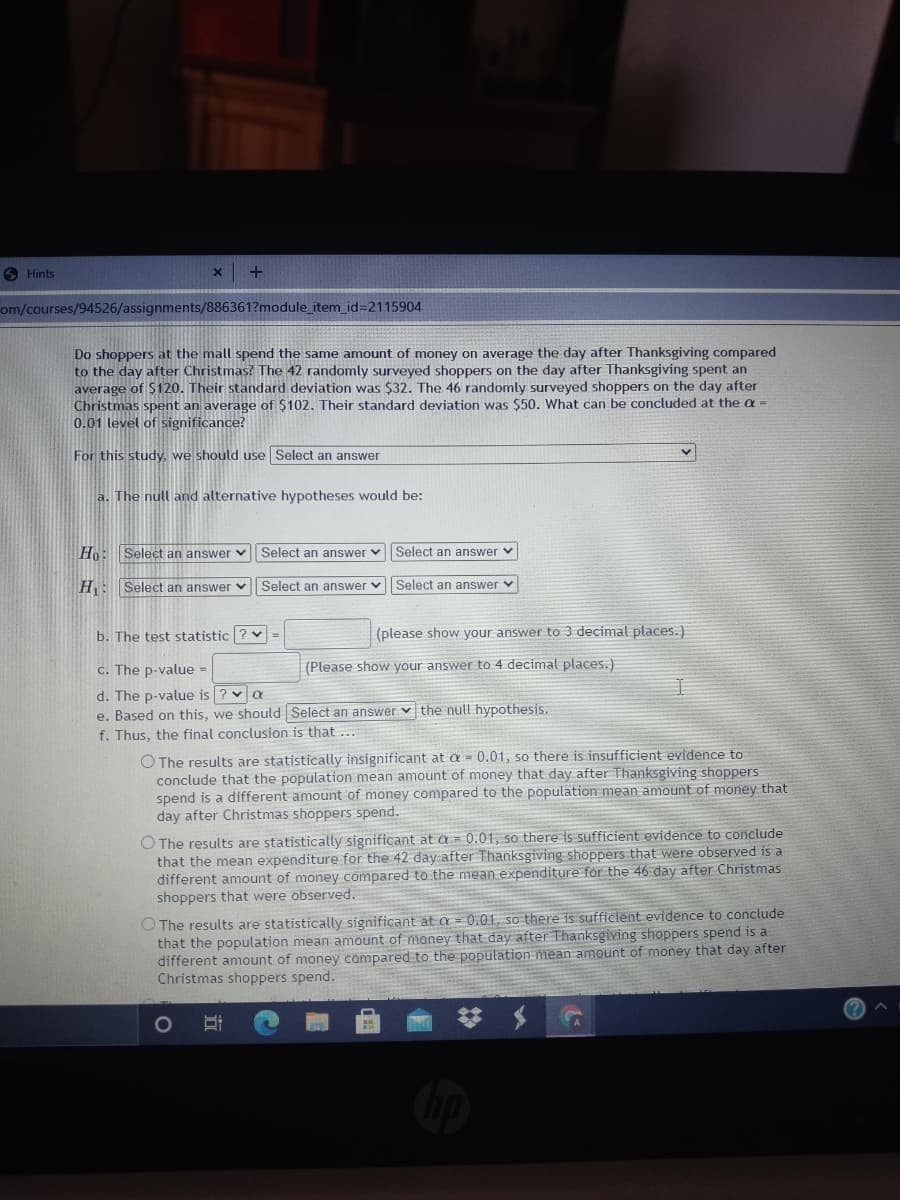Do shoppers at the mall spend the same amount of money on average the day after Thanksgiving compared to the day after Christmas? The 42 randomly surveyed shoppers on the day after Thanksgiving spent an average of $120. Their standard deviation was $32. The 46 randomly surveyed shoppers on the day after Christmas spent an average of $102. Their standard deviation was $50. What can be concluded at the a = 0.01 level of significance? For this study, we should use Select an answer a. The null and alternative hypotheses would be: Ho: Select an answer v Select an answer v Select an answer v H: Select an answer Select an answer v| Select an answer v b. The test statistic ? v = (please show your answer to 3 decimal places.) c. The p-value = (Please show your answer to 4 decimal places.) d. The p-value is ? v a e. Based on this, we should Select an answer f. Thus, the final conclusion is that ... the null hypothesis. O The results are statistically insignificant at a = 0.01, so there is insufficient evidence to conclude that the population mean amount of money that day after Thanksgiving shoppers spend is a different amount of money compared to the population mean amount of money that day after Christmas shoppers spend. O The results are statistically significant at a = 0.01, so there is sufficient evidence to conclude that the mean expenditure for the 42 day after Thanksgiving shoppers that were observed is a different amount of money compared to the mean expenditure for the 46 day after Christmas shoppers that were observed. O The results are statistically significant at a = 0.01, so there is sufficient evidence to conclude that the population mean amount of money that day after Thanksgiving shoppers spend is a different amount of money compared to the population mean amount of money that day after Christmas shoppers spend.
Percentage
A percentage is a number indicated as a fraction of 100. It is a dimensionless number often expressed using the symbol %.
Algebraic Expressions
In mathematics, an algebraic expression consists of constant(s), variable(s), and mathematical operators. It is made up of terms.
Numbers
Numbers are some measures used for counting. They can be compared one with another to know its position in the number line and determine which one is greater or lesser than the other.
Subtraction
Before we begin to understand the subtraction of algebraic expressions, we need to list out a few things that form the basis of algebra.
Addition
Before we begin to understand the addition of algebraic expressions, we need to list out a few things that form the basis of algebra.

Trending now
This is a popular solution!
Step by step
Solved in 3 steps with 3 images


